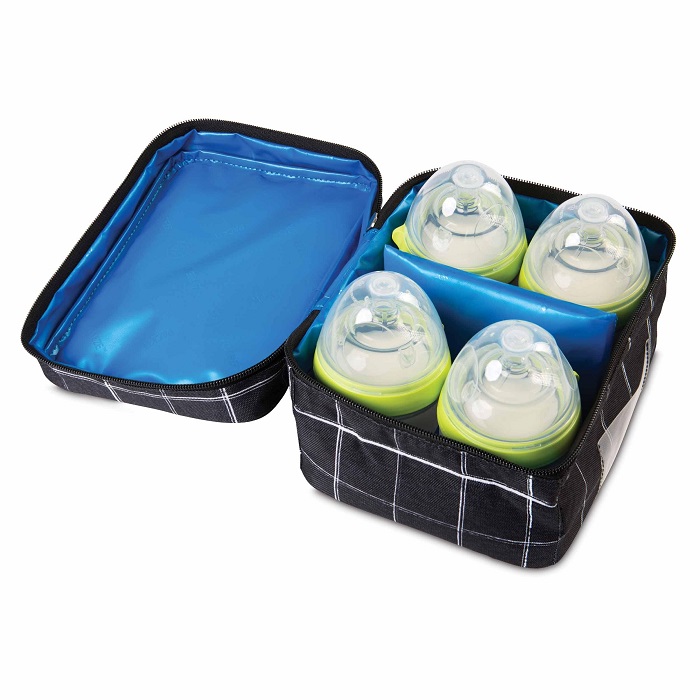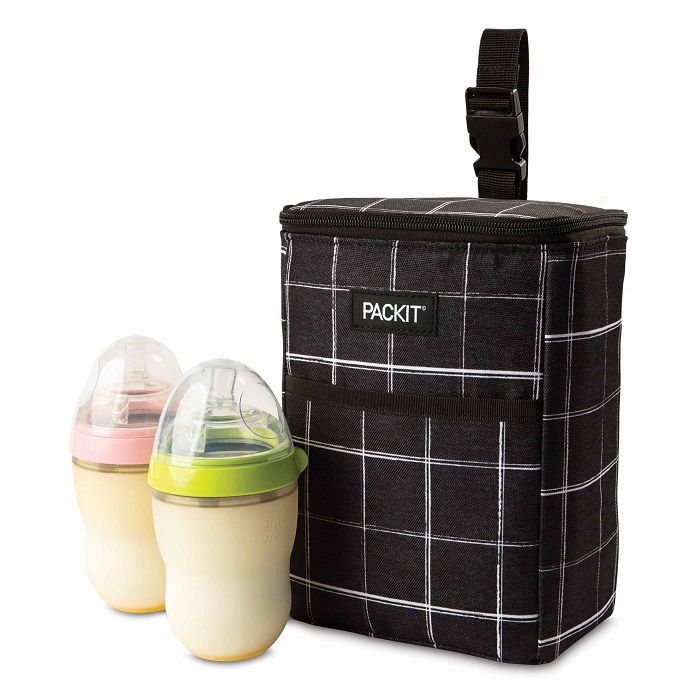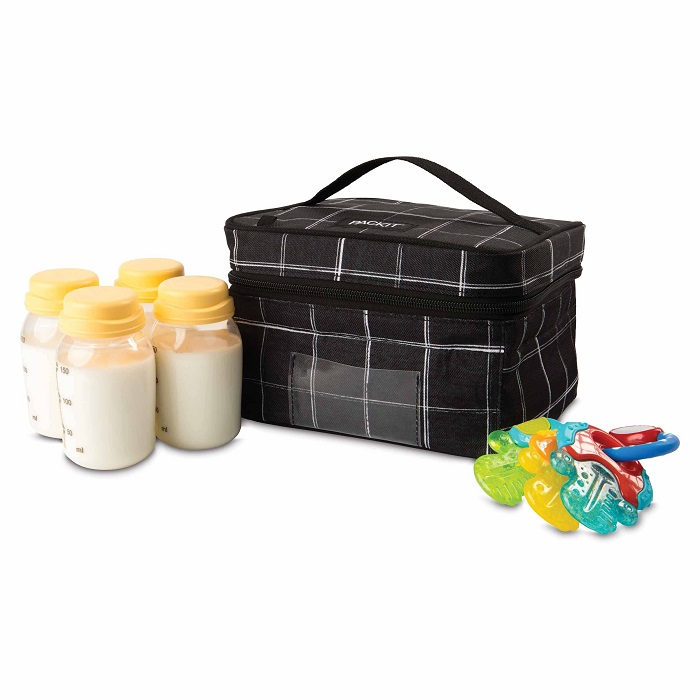Importance of Proper Breast Milk Storage
Proper storage of breast milk is crucial. It keeps the milk safe for your baby’s consumption. It maintains the milk’s nutritional quality and prevents spoilage. Moreover, storage affects the milk’s taste. Babies may refuse milk if it tastes off. Correctly stored milk reduces the growth of harmful bacteria.
Good storage practices also mean less waste. A mother’s effort in pumping can be maximized. No mother wants to discard breast milk due to improper storage. Additionally, it allows for a supply of milk when mothers are away. Parents and caregivers can offer stored milk with confidence.
The right breast milk cooler is a part of good storage. It keeps milk at safe temperatures while on the go. Even at home, proper cooling can extend the milk’s freshness. Remember, breast milk is food for your infant. Treat it with the same care as any other important nutrient.
Guidelines for Breast Milk Cooling
When cooling breast milk, follow these steps to ensure safety and quality:
- Chill Promptly: Cool breast milk as soon as possible after pumping.
- Use Ice Packs: When on the go, use ice packs in a breast milk cooler.
- Set the Right Temperature: Store breast milk in the back of the refrigerator at 39°F (4°C) or colder.
- Keep a Consistent Temperature: Avoid frequent temperature changes to prevent spoilage.
- Do Not Mix: Never mix fresh milk with already cooled milk. Cool separately then combine.
- Label the Bottles: Always label bottles with the date and time of pumping.
By following these simple steps, you can maintain the quality of your breast milk. This ensures your baby gets the nutrition they need in a safe and healthy manner. Remember, when in doubt, it is safer to discard the milk than risk your baby’s health.
Best Practices for Cooling and Storing Breast Milk

To keep breast milk safe and nutritious, follow these best practices:
- Start Cooling Immediately: Place breast milk in a cooler right after pumping. This slows bacteria growth.
- Use Proper Containers: Store milk in clean, food-grade containers. Glass or BPA-free plastics are good choices.
- Keep it Cold: Use a good breast milk cooler with ice packs. This keeps milk at a safe temperature.
- Separate Different Pumps: Store milk from different pumping sessions in separate containers. Don’t combine them until they’re both cold.
- Strictly Monitor Temperatures: Make sure your fridge is at the right temperature. Use a thermometer to check.
- Fill Bottles Properly: Fill bottles three-quarters full. This allows room for milk to expand when freezing.
- Date Each Bottle: Label bottles with the pumping date and time. Use oldest milk first.
- Thaw Safely: Thaw milk in the fridge or by running under warm water. Do not refreeze.
These practices ensure breast milk’s quality. They make feeding your baby safe and stress-free.
Types of Breast Milk Coolers
Choosing the right breast milk cooler is key for safe storage. There are several types. Soft cooler bags are light and portable. They are fit for short trips. Hard-sided coolers offer more protection. They suit longer outings. Electric breast milk coolers can keep milk cold for extended times. They’re good for travel or work days.
Soft Cooler Bags
Soft cooler bags are easy to carry. They fit well in diaper bags or under strollers. Most come with insulation. They keep breast milk cool for a few hours with ice packs. They usually hold a few bottles. This is good for daily use or outings.
Hard-Sided Coolers
Hard-sided coolers offer more insulation. They keep breast milk cool for longer. They are durable and protect bottles from damage. These are great for long trips. They come in various sizes. Some can hold multiple day’s supplies of breast milk.
Electric Breast Milk Coolers
Electric breast milk coolers plug into a power source. They keep milk cold for many hours. Some models can plug into a car’s electrical system. They suit working moms or long-distance travel. Their strong cooling ability offers peace of mind.
Each cooler type has its pros and cons. Think about your needs when choosing a breast milk cooler. Look for good insulation and fitting size. Make sure it’s easy to carry and clean. Remember, the goal is to keep breast milk safe and fresh.
How Long Can Breast Milk Be Safely Stored?

How long can you store breast milk safely? It depends on where you store it. At room temperature, breast milk should only stay out for 4-6 hours. In a fridge, it remains safe up to 4 days. In a freeze, breast milk stays safe for 6-12 months. Thawed milk lasts in the fridge for 24 hours. Don’t refreeze it.
- Room Temperature (up to 77°F or 25°C): 4-6 hours; ideal for immediate use.
- Refrigerator (at 39°F or 4°C): Up to 4 days; keep in the back, where it’s coldest.
- Freezer (at 0°F or -18°C): 6 months is best, but safe for up to 12 months.
- Thawed Milk (previously frozen): Use within 24 hours when kept in the fridge.
Stick to these time frames to keep breast milk safe. Always check milk before feeding your baby. If it smells or tastes off, it’s best to throw it away.
Tips for Transporting Breast Milk
Transporting breast milk requires careful planning. Here are some tips to ensure its safety:
- Pre-Chill Milk: Cool your breast milk in the fridge before transporting. This keeps it safer for longer.
- Insulated Coolers: Choose insulated breast milk coolers. They are best for keeping milk cold.
- Pack it Right: Put the breast milk in the center of the cooler. Surround it with ice packs for even cooling.
- Seal Containers Well: Make sure the milk containers are tightly sealed. This prevents spills and exposure.
- Avoid Direct Sunlight: Keep the cooler away from direct sunlight. Sun can heat the cooler quickly.
- Minimize Opening the Cooler: Open the cooler as little as possible. This helps maintain a constant temperature.
- Transport Quickly: Move breast milk to a fridge or freezer quickly upon reaching your destination.
- Use a Thermometer: Consider using a thermometer in the cooler. It helps monitor the milk’s temperature.
By following these guidelines, you can transport your breast milk safely and keep it fresh for your baby.
Cleaning and Maintenance of Breast Milk Coolers
Keeping breast milk coolers clean is vital. It ensures your baby’s milk stays safe and contamination-free. Here are steps to clean and maintain your cooler:
- Empty the Cooler: Remove all bottles and ice packs from the cooler.
- Wash Thoroughly: Use warm, soapy water to clean the inside and outside. For soft cooler bags, be gentle.
- Rinse Well: After washing, rinse the cooler with clean water.
- Dry Completely: Air dry the cooler or use a clean towel. Make sure there is no moisture left.
- Sanitize: Occasionally, sanitize the cooler. You can use a mild bleach solution or sanitizer intended for baby products.
- Check for Damage: Inspect your cooler for any wear or tear. Look for damaged insulation or leaks.
- Wipe Ice Packs: Clean ice packs with soapy water. Rinse them and dry before refreezing.
- Regularly Update Ice Packs: Ice packs wear out over time. Replace them as needed to ensure proper cooling.
By keeping your breast milk cooler clean, you protect your milk’s quality. You also make sure your cooler lasts longer. Consistent maintenance is the key to safe breast milk storage on the go.
Troubleshooting Common Breast Milk Cooling Issues

When using a breast milk cooler, you may face some common issues. Here’s how to troubleshoot them:
- Breast Milk Not Cooling Enough: Check if the ice packs are fully frozen before use. Ensure the cooler is not over-packed, which can prevent proper air circulation.
- Breast Milk Getting Too Cold: If milk is freezing, adjust the cooler’s temperature. Make sure the ice packs aren’t in direct contact with the bottles.
- Cooler Leaks: Inspect the cooler for any holes or tears, especially along the seams. Consider replacing the cooler if it’s damaged.
- Persistent Bad Odor: Clean the cooler thoroughly as mentioned in the maintenance steps. If the smell persists, it could be time to replace it.
- Ice Packs Losing Their Efficiency: Sometimes ice packs can start to lose their cooling power. Replace them periodically to ensure consistent cooling.
- Milk Spoilage: If milk spoils quickly, it might not be cooled quickly enough after pumping. Follow the guidelines for prompt cooling and proper storage.
By handling these issues, you can ensure your breast milk remains safely stored. Monitor your breast milk cooler’s performance regularly. Swift action can prevent spoilage, keeping your milk ready for your baby’s nourishment.
